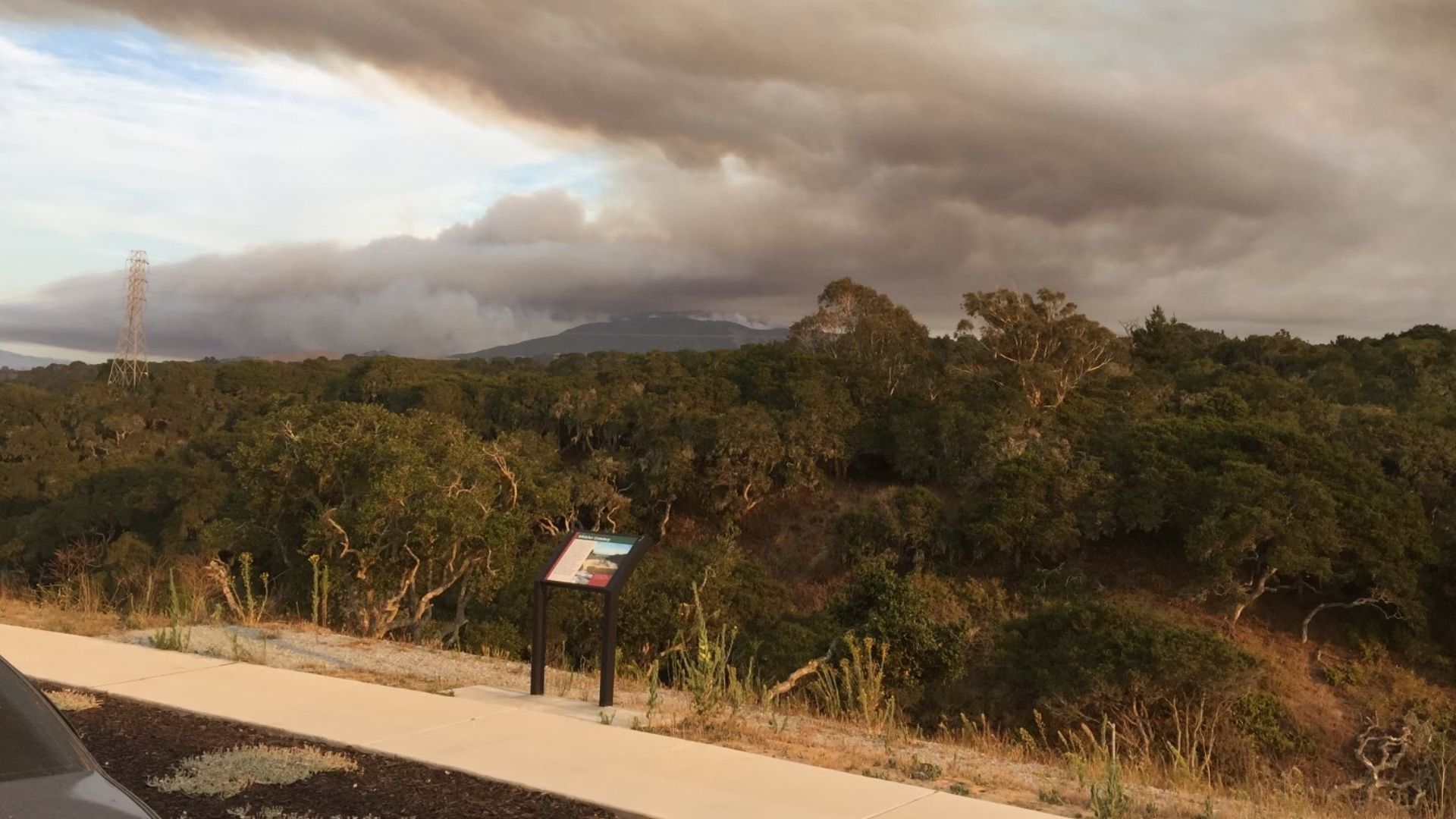Prepare for the 2022 fire season in Monterey County

The 2020 River Fire as seen from East Garrison | Photo by Ken Folsom
July 7, 2022
By Kera Abraham
Historically, wildfires along the Central Coast have peaked from July to October. But climate change is lengthening California’s fire season, and wildfires are increasingly sparking throughout the year – like the Colorado Fire that tore through a section of Big Sur in January.
“It’s a reality we’re going to have to live with,” says Ken Folsom, Emergency Manager with the University Police Department. “We may not think of Monterey Bay as the wildfire capital of the world, but it can happen here. It has happened here.”
Bottom line: All members of the campus community should be prepared. Here are the top tips he urges everyone to follow:
- Be informed. Sign up for OTTERalerts to receive emergency notifications.
- Be prepared to evacuate. When a nearby wildfire presents the possibility of evacuation orders, get your stuff together. Be ready to take any pets. Other priorities might include medications, important documents, and family photos.
- Digitize your documents. Scan critical paper records like your birth certificate, insurance information, and health records. Store them on a thumb drive and put it somewhere you’ll remember in an evacuation, like with your medications, or have a backup on a cloud server like Google Drive.
- Know where you’re going. Where will you evacuate to? CSUMB is prepared to shelter campus community members in spaces like the Otter Sports Center. Other shelters may be provided, as needed, at local high schools and other large buildings.
- Take care of your health. Even if you aren’t under evacuation orders, wildfires can produce unhealthy air. CSUMB’s Emergency Management and Risk Management, Environmental Health, and Safety offices monitor air quality daily. When conditions are dangerous, they issue safety warnings or shelter-in-place orders through OTTERalerts. Precautions may include closing doors and windows, turning off HVAC systems, using N95 face masks, and avoiding driving in smoky conditions.
- Do your part for wildfire prevention. If you go camping, pay attention to the weather and follow the rules. In some areas, like Pinnacles National Park and the Ventana Wilderness, agencies may prohibit flames of all kinds – including camping stoves – in high fire risk conditions. If you are permitted to light a campfire or barbecue (especially a charcoal grill), supervise it until it’s all the way out. On East Campus, wood fires are not allowed, and grills must be fueled by propane.
- Look out for sparks. Be vigilant extinguishing anything that produces embers, including cigarettes. Even driving can be a fire risk: Avoid pulling over into dry brush, where your vehicle’s catalytic converter can spark the vegetation.
Learn more
- Sign up for CSUMB's emergency notification system, OTTERalerts
- Use CalFire’s Ready for Wildfire website or web-based app to sign up for text alerts and access the Ready, Set, Go! evacuation preparedness guide.
- Make an emergency plan using SafeHome.org’s Guide to Staying Safe during Wildfires
- Access more tips and resources on Wildfires | Ready.gov
- Download the FEMA app and receive real-time alerts from the National Weather Service.
- Learn about Emergency Management at CSUMB.
Folsom’s team is trained to respond to fast-paced emergencies, but they’re also making long-term plans. In his office inside the campus Emergency Operations Center (EOC), Folsom has tacked up a blueprint of an annex building that’s slated to become a more spacious EOC. His team is also gearing up for a wildfire fuel reduction project that will begin in the fall. Efforts like these can help prevent fires or reduce their spread.
“We can never be perfect,” Folsom says, “but we strive for excellence in being able to handle all these disasters that come up.”
Folsom moved to California from a rural community east of Cleveland, Ohio, where he worked for decades as an emergency manager and volunteer firefighter. In Geauga County he helped prepare for and respond to disasters including snowstorms and even a hurricane. In Monterey County, the bigger risks are earthquakes and wildfires.
In 2016, the year Folsom arrived at CSUMB, the Soberanes Fire burned more than 130,000 acres along the Big Sur coast, and the California Department of Forestry and Fire Protection (CalFire) used part of campus for ground support.
Fire can also threaten the campus directly. In the sprawling wildlands between East Campus and Highway 68, and the nearby open space managed by the Bureau of Land Management and Monterey County Parks, a spark could grow quickly into a full-blown wildfire.
Folsom recalls a night during the August 2020 River Fire that his team was preparing for the potential evacuation of East Campus. “I slept with one eye open and one ear open to the radio,” he says. “All it would take is for the fire to jump Highway 68 and make a run for campus.”
CSUMB will continue to support CalFire’s disaster response in Monterey County, Folsom says: The campus’ available storage space, parking lots, and other infrastructure can serve as staging areas and incident command centers.